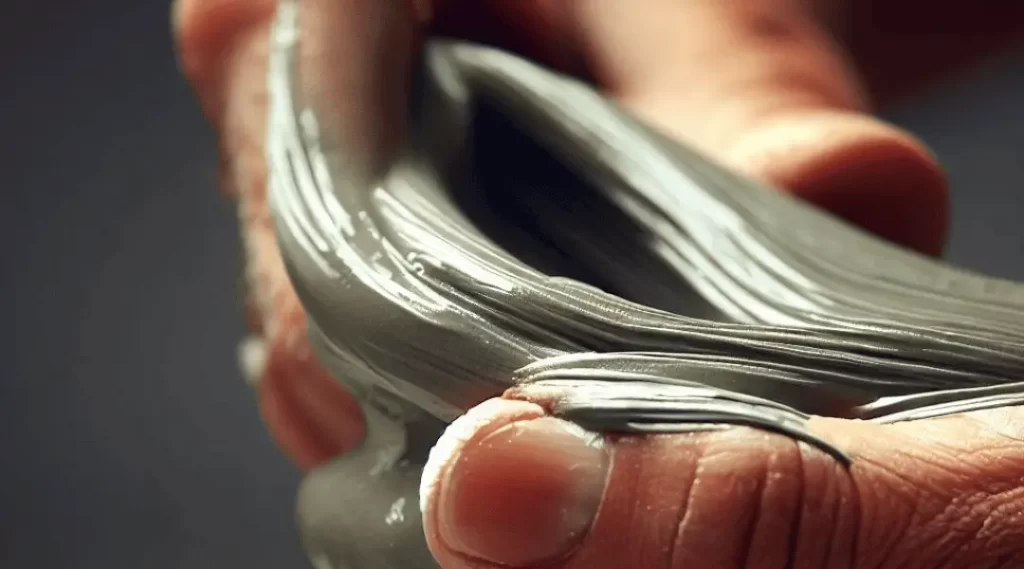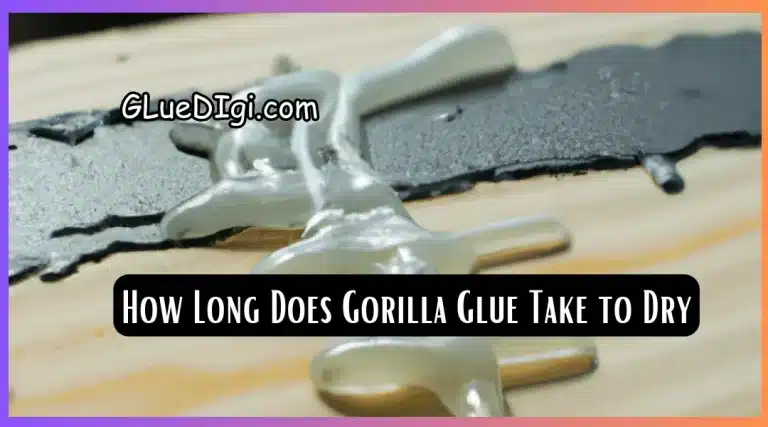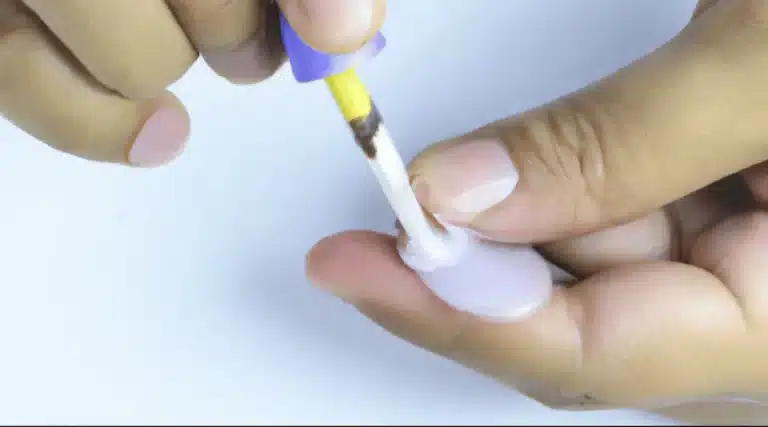Bonding putty is a versatile material that has become increasingly popular in construction and DIY projects. It is a type of adhesive that can be used for a range of applications, from filling gaps and cracks to attaching and securing objects. Bonding putty is typically made from two-part epoxy resin or a combination of resin and hardener, which are mixed together to create a strong, durable bond.
In this article, we will explore the uses of bonding putty, its pros and cons, and provide tips for working with this material. Whether you are a professional contractor or a DIY enthusiast, understanding the benefits and limitations of bonding putty can help you make informed decisions when selecting materials for your projects.
So, let’s dive in and discover the world of bonding putty.
What is Bonding Putty?
A versatile material commonly used in construction and DIY projects, bonding putty is a type of adhesive substance that can be molded and shaped to fill gaps, cracks, and holes in various surfaces. Its properties make it an ideal solution for repairing and smoothing out damaged walls, ceilings, and floors.
Bonding putty is composed of a mixture of resin, hardeners, and fillers that give it its adhesive and cohesive properties. Application techniques vary depending on the type of bonding putty, but generally involve mixing the putty with a hardener before applying it to the surface with a putty knife. Once applied, the putty dries to a hard, durable finish that can be sanded, painted, or stained to match the surrounding surface.
With its versatility and ease of use, bonding putty has become a go-to solution for home improvement and repair projects. Moving on to its uses, bonding putty can be used for a variety of purposes, such as filling gaps and cracks, sealing joints, and smoothing out rough surfaces.
Uses of Bonding Putty

The potential applications of bonding putty encompass a wide range of industries, including construction, automotive repair, and marine maintenance. The versatility of bonding putty makes it a popular choice for many DIY projects, home repairs, and even art projects.
Some of the bonding putty uses include filling gaps and cracks, repairing damaged surfaces, and bonding different materials together. In construction, bonding putty is used to seal and fill gaps in drywall, concrete, and wood surfaces. In automotive repair, it can be used to fix dents, scratches, and other surface damage. In marine maintenance, bonding putty is used to repair small leaks and cracks in boats and other watercraft.
While bonding putty has many benefits, it also has some limitations. It is not suitable for structural repairs, and it can be difficult to work with in certain conditions, such as extreme temperatures. However, with some working tips and techniques, bonding putty can be a valuable tool in many situations.
In the next section, we will explore the pros of bonding putty and why it is a popular choice for many professionals and DIY enthusiasts alike.
Pros of Bonding Putty
Bonding putty is a versatile material that finds its uses in a wide range of applications. It is known for its strength and durability, making it a popular choice for bonding materials of different types.
Additionally, bonding putty exhibits impressive resistance to water and chemicals, making it suitable for use in demanding and harsh environments.
In this discussion, we will explore the pros of bonding putty, particularly its versatility, strength and durability, and its resistance to water and chemicals.
Versatility
With its ability to adhere to a wide variety of surfaces and materials, bonding putty proves to be an incredibly versatile substance. This flexibility makes it an ideal choice for a wide range of applications, from sculpting projects to DIY home repairs.
Some of the key reasons why bonding putty is so versatile include its ability to fill gaps and cracks, its ability to bond with a wide range of materials, its moldable consistency, and its quick-drying properties. Whether you are looking to repair a broken item, create a unique piece of art, or complete a DIY project around your home, bonding putty offers a reliable solution.
As we move into the next section on strength and durability, it is important to note that one of the key benefits of bonding putty is its ability to provide a long-lasting and reliable hold.
Strength and Durability
Strength and durability are essential factors to consider when evaluating the efficacy of bonding putty as a practical solution for long-lasting repairs and projects. Durability testing and bonding strength comparisons are critical in determining the effectiveness of bonding putty.
It is important to ensure that the bonding putty can withstand the stress and strain of the intended application. The strength of the bonding putty is directly related to its ability to hold the materials together, and it is vital to choose a bonding putty with a high bonding strength.
Additionally, durability is crucial in ensuring that the bonding putty can withstand the test of time, even in adverse conditions. Bonding putty that can resist wear and tear, as well as environmental factors, is a more reliable solution. With these factors in mind, bonding putty can be an excellent solution for long-lasting repairs and projects.
The next section will explore the water and chemical resistance of bonding putty, which is another critical factor to consider.
Water and Chemical Resistance
Assessing the water and chemical resistance of bonding putty is crucial in determining its overall efficacy as a long-lasting repair and project solution.
One major advantage of bonding putty is its ability to resist water damage, making it an ideal solution for repairing leaky pipes or sealing cracks in a damp environment.
Additionally, bonding putty is often chemical-resistant, allowing it to withstand exposure to various chemicals and solvents without breaking down or losing its adhesive properties.
However, it is important to note that the efficacy of bonding putty largely depends on the surface preparation and application methods used.
Surface preparation is critical in ensuring that the bonding putty adheres properly and is able to withstand any potential stressors.
Despite its many benefits, bonding putty has its limitations and drawbacks, which we will explore in the subsequent section.
Cons of Bonding Putty
Despite its potential benefits, the limitations of bonding putty may cause issues for those seeking a more durable and reliable solution for their bonding needs. One of the main cons of bonding putty is its toxicity risks, which may pose a danger to users if not handled properly.
Additionally, compatibility issues may arise when bonding putty is used with certain materials, such as metals or plastics. This may result in weakened bonds or even complete failure of the bond, rendering the bonding putty useless.
However, with proper precautions and techniques, bonding putty can still be a valuable tool in many applications. In the following section, we will discuss some tips for working with bonding putty to ensure optimal results.
Tips for Working with Bonding Putty
Effective utilization of bonding putty requires adherence to certain guidelines and techniques, which can optimize its performance in various applications. Working techniques for bonding putty include:
- preparing the surface to be bonded, ensuring that it is clean, dry, and free of any contaminants that may compromise the bond.
- ensuring that the putty is thoroughly mixed according to the manufacturer’s instructions and applied evenly to the surface.
Troubleshooting tips include:
- adding a small amount of additional putty to areas that may be prone to movement or stress, such as corners or joints.
- using a damp cloth or sponge to smooth out any rough or uneven areas.
It is important to note that bonding putty may not be suitable for all applications, and proper safety precautions should be taken when handling the material.
Overall, following these working techniques and troubleshooting tips can help ensure the best possible results when using bonding putty in various applications.
In conclusion and recommendations, we will discuss the benefits and limitations of bonding putty and provide guidance on selecting the appropriate product for your specific needs.
Recommendations
This section concludes by providing recommendations and insights on the limitations and benefits of utilizing bonding putty, with a noteworthy statistic revealing that the global market for adhesives and sealants is projected to reach $82.4 billion by 2026.
For those considering using bonding putty, it is important to keep in mind the following recommendations: always follow the manufacturer’s instructions, use protective gear to prevent any skin irritation or inhalation of fumes, and assess the suitability of the putty for the intended application.
While bonding putty can be a versatile and cost-effective solution for a range of bonding and filling applications, it also has its limitations. For instance, it may not be suitable for high-stress applications or situations with extreme temperatures. Additionally, bonding putty may not provide the same level of strength and durability as other bonding solutions.
Nevertheless, for certain applications, bonding putty can be a useful tool in the toolbox of DIY enthusiasts, hobbyists, and professionals.
Conclusion
Bonding putty is a versatile material that is commonly used in both residential and commercial construction projects. It is a type of adhesive that is designed to bond various materials such as wood, metal, and plastic. Bonding putty is made up of a combination of resin and hardener, which when mixed together create a strong, durable bond.
The uses of bonding putty are numerous and varied. It is commonly used in construction projects to fill gaps and cracks, as well as to attach and bond different materials together. Bonding putty is also used in automotive and marine industries to repair and bond various parts and components. Additionally, it can be used in household repairs and DIY projects to fix broken items such as furniture, appliances, and plumbing fixtures.
The pros of bonding putty include its versatility, its ability to bond a wide range of materials, and its durability. It is easy to work with and can be molded into different shapes and sizes. Bonding putty is also resistant to water, heat, and chemicals, making it ideal for use in harsh environments.
However, the cons of bonding putty include its strong smell, which can be overwhelming, and its tendency to shrink as it dries, which can result in cracks and gaps if not applied properly.
In conclusion, bonding putty is a useful and versatile material that has numerous applications in various industries. While it has its pros and cons, it is a reliable adhesive that can be used in a range of different projects. However, it is important to follow the manufacturer’s instructions carefully when working with bonding putty to ensure that it is applied correctly.
In the end, the irony of bonding putty is that although it is a strong adhesive, it is also a material that can be easily manipulated and molded to fit a variety of different needs.




